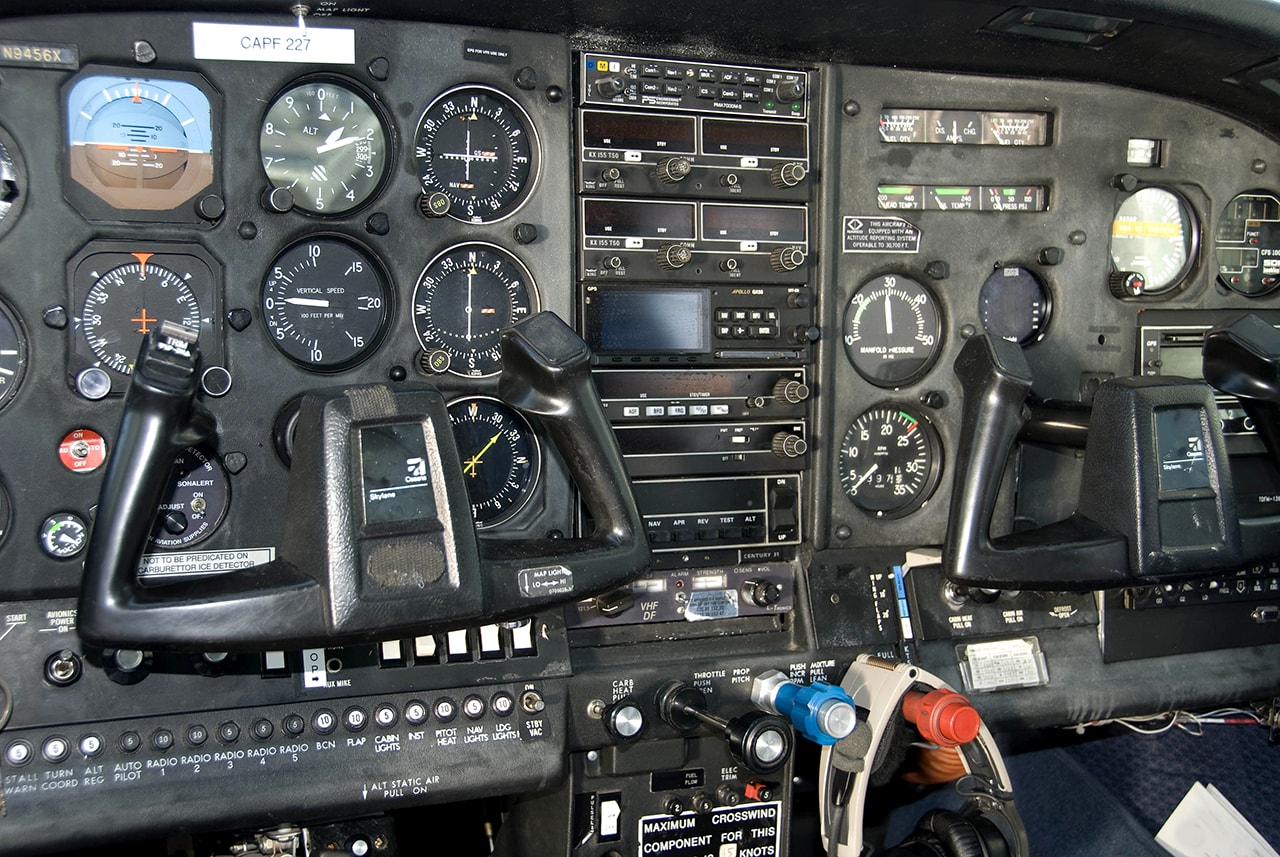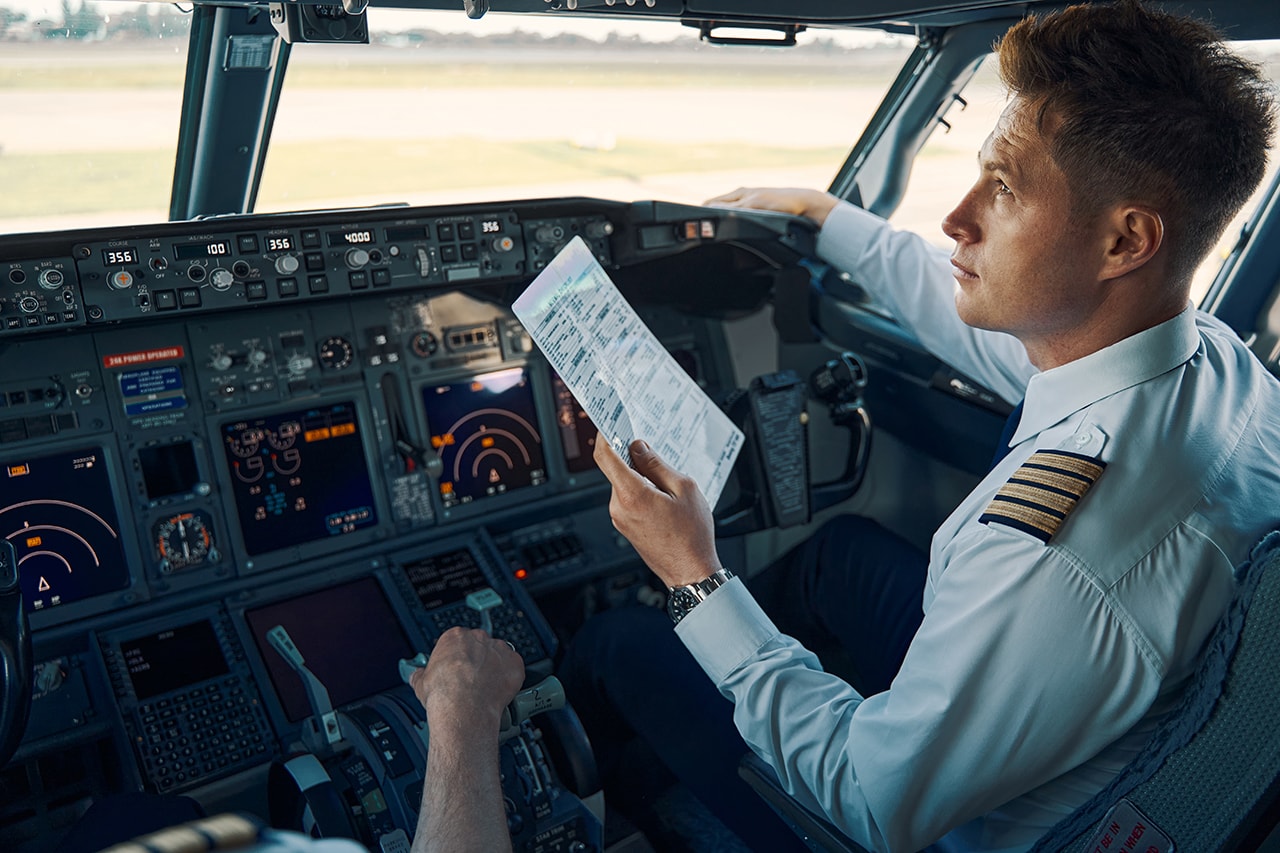Attitude Indicator Guide: How to Read and Use It
Sep 23, 2024Mastering your aircraft's attitude is crucial for every private pilot trainee. By understanding and effectively using attitude indicators, including the Attitude Indicator Markings, you can significantly enhance flight safety and confidence.
This comprehensive guide is designed to help you master this essential instrument, providing the knowledge you need to fly with assurance and precision. Dive in and elevate your skills!
Understanding Attitude Indicators
Attitude Indicators
The attitude indicator is a must have for IFR pilots when the visibility is low. It helps you navigate when you can’t see. It shows the aircraft position relative to the horizon. For more in-depth information on how attitude indicators work, you can refer to the FAA's Pilot's Handbook of Aeronautical Knowledge.
But VFR pilots can benefit from understanding how to use the attitude indicator too. This is especially useful when you encounter bad weather or poor visibility. For example, when you suddenly encounter fog or heavy rain, a VFR pilot who is proficient in using the attitude indicator can respond calmly and safely.
At its simplest the attitude indicator shows pitch and bank, giving you critical information about the aircraft’s attitude. The clear easy to read artificial horizon display means you can see the situation and adjust quickly.
This is the basis of private pilot training, so new pilots can interpret the instruments feedback and act fast.
For VFR pilots being familiar with the attitude indicator can make all the difference in staying in control when you encounter instrument meteorological conditions (IMC). It will give you more confidence and overall safety.
Flying instruments is a VFR skill, especially when flying at night or in low visibility. Practicing with the attitude indicator will help you handle those situations better.
In short, the attitude indicator is an essential instrument for all pilots. By understanding how to use it, you’ll fly more safely and maintain better control, regardless of the conditions.
Its role within the 6 Pack Flight Instruments underscores its importance in aviation.
Types of Attitude Indicators

Traditional and Electric Attitude Indicators
These use an internal gyroscope spun by the vacuum system. While they work, they’re not as reliable as modern alternatives, such as the traditional attitude indicator.
Electric Attitude Indicator
Electric attitude indicators use a solid-state gyroscope instead of a traditional one. They are more reliable and accurate, offering better performance and consistency.
Digital Attitude Indicators
Digital attitude indicators use solid state gyros and accelerometers to measure the aircraft’s attitude. They are more precise and robust.
All-in-One Attitude Indicators
These instruments combine multiple functions into one, attitude indicator, heading indicator and turn indicator. By combining all these functions, they are a completer and more convenient tool for pilots.
Knowing these different types of attitude indicators is important for private pilot training, so students can understand each instrument’s benefits and applications. That means better situational awareness and safety.

Reliability and Accuracy
Modern electric and digital attitude indicators are more reliable and accurate than the old ones. So, you can trust them to give you consistent and accurate information during your flights.
Electric and digital attitude indicators are especially valuable in IMC as they give you reliable data you need to navigate safely. By using these modern instruments in your daily flying, including attitude heading reference system, you will increase your safety and overall flying enjoyment.
Better Pilot Experience
By using advanced attitude indicators, you will not only increase your safety but also your flying experience. The modern technology gives you better performance so it’s easier and safer to fly in any conditions.

Reading and Interpreting Attitude Indicators and the Artificial Horizon Line
The attitude indicator gives a quick snapshot of both pitch and roll attitudes in a single glance.
Key Features:
-
Pictorial Representation: The gauge contains a visual of an aircraft, the sky, the land, and an artificial horizon line.
-
Measurement Indicators: Hash marks, pointers, arrows, and lines help quantify the degree of change.
The gauge contains a pictorial representation of an aircraft, the sky, the land, and an artificial horizon line. Hash marks, pointers, arrows, and lines on the face help quantify the degree of change.
The miniature aircraft on the gauge will roll left or right with the bank and move vertically up or down relative to the artificial horizon.
The pitch indicator measures the angle between the horizon and the longitudinal axis of the aircraft.
The attitude indicator provides a quick and clear view of both pitch and bank attitudes at a single glance. This makes it an essential tool for pilots to maintain control and awareness during flight.
The gauge features a simplified visual that includes a depiction of an aircraft, the sky, the land, and an artificial horizon line. This visual representation helps pilots easily understand their aircraft’s orientation.
Additional features such as hash marks, pointers, arrows, and lines on the instrument’s face help measure the degree of any changes in attitude. These markers make it easier to interpret and react quickly to the aircraft’s motion.
As the aircraft banks left or right, the miniature airplane on the gauge tilts in the corresponding direction. It also moves up or down relative to the artificial horizon to indicate pitch changes.
The pitch indicator specifically measures the angle between the aircraft’s longitudinal axis and the horizon. This is crucial for maintaining level flight and ensuring smooth maneuvers.
Overall, the attitude indicator is a user-friendly tool that enhances pilot safety and situational awareness by providing immediate, intuitive feedback on the aircraft’s orientation.

Advanced Attitude Indicator Technology and Primary Flight Displays
Attitude Heading Reference Systems (AHRS) provide three-axis information using ring laser gyroscopes or solid-state electronics. This high-tech technology delivers precise and accurate attitude information, making AHRS incredibly useful in pilot training, where attitude indicators are critical for safe flight.
AHRS can feed orientation data to multiple devices on the aircraft, such as primary flight displays (PFDs), enhancing the pilot's situational awareness and overall safety.
Inertial Reference Units (IRUs) add to AHRS by utilizing a combination of accelerometers and gyroscopes. Together, these devices provide the aircraft’s orientation relative to the Earth’s horizon, adding another layer of crucial information for the pilot.
IRUs are not often used in in private pilot training because of the technological simplicity of training aircraft. However, it is good for student pilots to learn about them as they become important pieces of equipment in larger, higher tech aircraft.
To ensure continuous and safe operation, emergency attitude reference systems serve as vital backups. In the event of a failure, these systems provide an alternate attitude indicator, allowing pilots to maintain control and navigate safely.
Private pilot training covers these systems in depth, so trainee pilots are prepared for any eventuality.
By understanding and using these systems, pilots can fly with confidence, knowing they have the tools to keep their aircraft oriented and safe.

Mastering Attitude Control
The attitude indicator is a pilot’s best friend for flying straight and level. It gives you clear and accurate information about the aircraft’s relationship to the horizon. That’s key to steady and controlled flight.
Pilots also use the heading indicator and turn indicator along with the attitude indicator for coordinated turns.
These three instruments work together to provide comprehensive information about direction and rate of turn for smooth and precise flying.
In instrument meteorological conditions (IMC) where visibility is zero, the attitude indicator is even more critical.
It helps you control and navigate the aircraft, giving you the confidence to fly safely in those challenging conditions.
To really master attitude control, practice and training are key. By practicing regularly you’ll become proficient in using these instruments and be able to handle anything that comes your way.

Troubleshooting and Maintenance
Attitude indicators are generally reliable, but occasional errors can occur. Over time, the alignment of the gyro can drift from the actual horizon, particularly at varying latitudes, and periodic realignment is necessary to ensure precise readings for safe flight. Fortunately, most of these errors are minor and can be corrected with ease. This ensures that the instrument continues to provide accurate readings.
Many attitude indicators come equipped with an adjustment knob. This allows pilots to adjust the miniature aircraft based on their point of view, enhancing both the accuracy and usability of the instrument.
Older models of attitude indicators had more restrictive pitch and bank limits, specifically 60-degrees for pitch and 100-degrees for bank. In contrast, newer models offer more generous limits, providing pilots with greater flexibility and accuracy.
Regular maintenance and inspections are crucial for the consistent performance of attitude indicators. By keeping the instrument in top condition, pilots can rely on its accuracy and reliability, ensuring safe flight operations.

Best Practices for Attitude Indicator Use
First and foremost, always make it a habit to check the attitude indicator during your pre-flight checks. This ensures that the instrument is functioning properly before you take off, giving you peace of mind and better control over your flight.
It’s crucial to use the attitude indicator in conjunction with other instruments like the heading indicator and turn indicator.
These instruments work together to provide a clearer picture of your aircraft’s position and movement, making your flight safer and smoother.
Continuous practice and training are non-negotiable for mastering attitude control. Regular training allows you to become more familiar with the attitude indicator, improving your ability to respond effectively in different flight conditions.
Lastly, staying alert and focused during instrument meteorological conditions (IMC) is key. Use the attitude indicator to maintain straight and level flight, and to execute coordinated turns.
Your alertness and effective use of this vital instrument will lead to safer flight operations.
Conclusion
Mastering your aircraft's attitude control is crucial for all pilots. The attitude indicator is an essential tool, providing vital information about the aircraft's orientation. Whether flying by Visual Flight Rules (VFR) or Instrument Flight Rules (IFR), it ensures that each flight is safe and controlled.
Understanding and effectively using various types of attitude indicators—traditional, electric, digital, and all-in-one—can significantly enhance a pilot's situational awareness and overall flying experience. This knowledge is key to navigating the skies confidently.
Continuous practice and diligent maintenance are vital to the reliability and accuracy of attitude indicators. Regular checks, pre-flight inspections, and coordinated use with other instruments are essential for mastering attitude control, contributing to safer flight operations.
Finally, becoming proficient with the attitude indicator has a profound impact on your aviation journey. Whether facing dense clouds or unexpected weather, expert use of this instrument will guide you towards successful and safe flights. Embrace the endless possibilities the skies offer with confidence and proper training. Fly confidently, fly safely.

